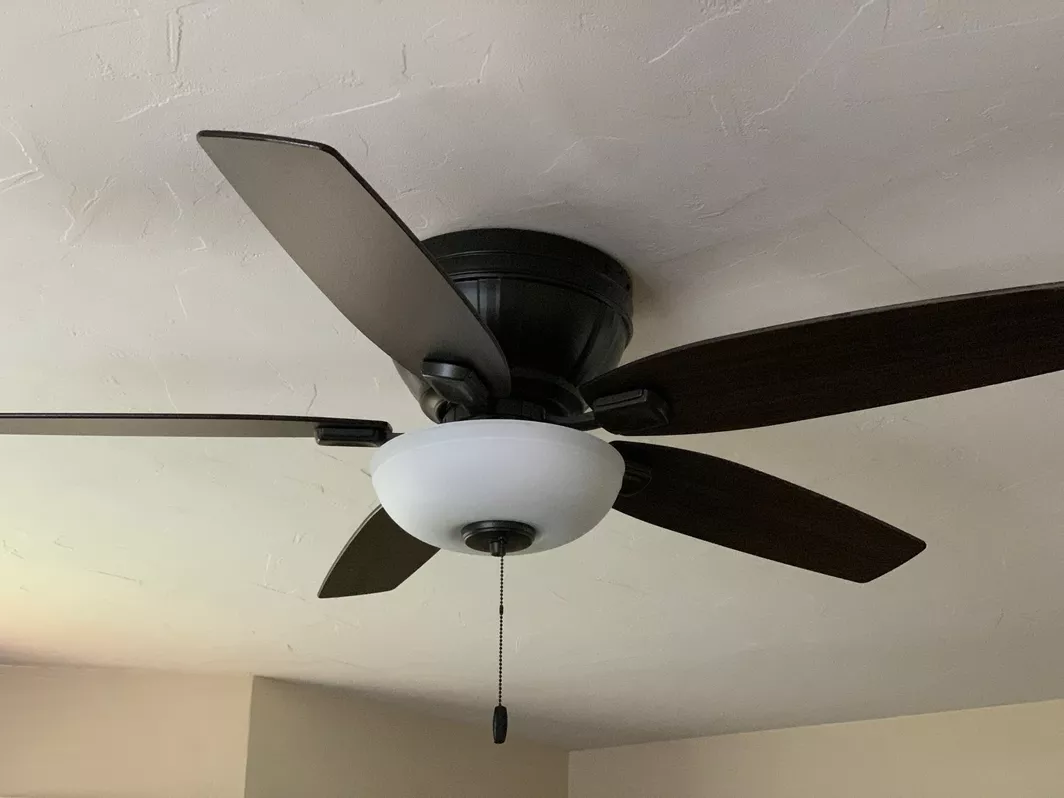Ceiling Fan Direction Guide

Most of us know the joys of having a ceiling fan, especially during those sweltering summer days or chilly winter evenings. But did you know that the direction your ceiling fan spins can significantly affect how comfortable you feel? That's right, the secret to maximizing your ceiling fan's efficiency lies in knowing when to switch its rotational direction.
You may wonder, "Why does it matter?" or "How do I change my ceiling fan direction?" We'll guide you through the simple steps to change the direction of your fan based on the season. Knowing when to push air down and when to pull it up and away can make a big difference when it comes time to pay your monthly bills. Fans are much less expensive to run than air conditioning or heat, so if you can make those systems more effective, you'll see significant savings.
Interested in a ceiling fan installation?
Call Jon Wayne for a free in-home estimate. We offer convenient scheduling times and honest, upfront prices. Our licensed electricians can install any size, make, or model of ceiling fan to help your home stay comfortable all year round.
Summer Fan Direction
In the summer months, the key to feeling cooler is maximizing airflow to create a wind chill effect on your skin. When your skin perspires, the evaporative cooling effect makes you feel cooler as the moisture evaporates. A ceiling fan spinning in the correct direction can help accelerate this process.
The Right Direction
During the summer, your ceiling fan should rotate counter-clockwise when you look up at it. This pushes cool air down and helps circulate it throughout the room, creating that much-needed breeze that helps you feel cooler. If your fan has adjustable speeds, you'll likely benefit from a higher speed setting in particularly hot weather. Remember that if the room is larger than 500 square feet, you might need an additional fan to get the most benefit.
Impact on Air Conditioning Costs
The Department of Energy estimates that you can increase your thermometer settings by up to 4 degrees without sacrificing comfort when using a ceiling fan. A 2-degree change can save you as much as 14% on your cooling costs, a significant savings by the end of the year. Just remember to turn the fan off when you leave the room. Fans don't actually lower the temperature, they just help you feel cooler in the space when you remember which direction to run your ceiling fan in the summer. If you're not there, they aren't effective, and you shouldn't pay to run them.
Winter Fan Direction
In the colder months, warm air generated by your heating system naturally rises to the ceiling while cooler air sinks to the floor. This can result in uneven temperatures throughout the room, leading to cold feet and a stuffy head—literally! Reversing the direction of your ceiling fan can help redistribute warm air more evenly.
The Right Direction
In winter, your ceiling fan should rotate in a clockwise direction when you look up at it. This pulls cool air up and forces the warm air near the ceiling to move downward along the walls. The result? A cozy, well-heated room that maximizes energy efficiency. For winter usage, a lower speed setting is usually more effective to avoid creating a wind chill effect.
Reduced Heating Expenses
Like the counter-clockwise rotation of summer, running a slow clockwise ceiling fan in the winter can help you save on heating costs. You could save up to 15% of your typical heating bill, which can be solid savings since the average U.S. household spends half of the monthly utility bill on heating or cooling costs.
How to Change Fan Direction
Steps for Manual Direction Adjustment
To manually adjust the spin direction, start by turning off your fan and ensuring it has completely stopped. Then, locate the switch. Use good ladder safety if needed, and be careful when removing any glass parts to access the control switch. If it's located on the light fixture, you might have to remove the glass cover first. Flip the switch, reinstall any glass you need to remove, head back to ground level, and turn the fan on.
Remote Control and Smart Fan Options
If you have a fan with a remote, you can often simply hold down the fan button until you hear a beep. The fan will then automatically shift directions. With a smart fan, app controls offer the same utility. Go into the app and select the correct direction.
Ready to save on healing and cooling costs with new ceiling fans?
Get a reliable and fast ceiling fan installation when you call the Jon Wayne team. Backed by thousands of 5-star reviews and a 100% satisfaction guarantee, you can trust us to get the job done right, with no exceptions.

